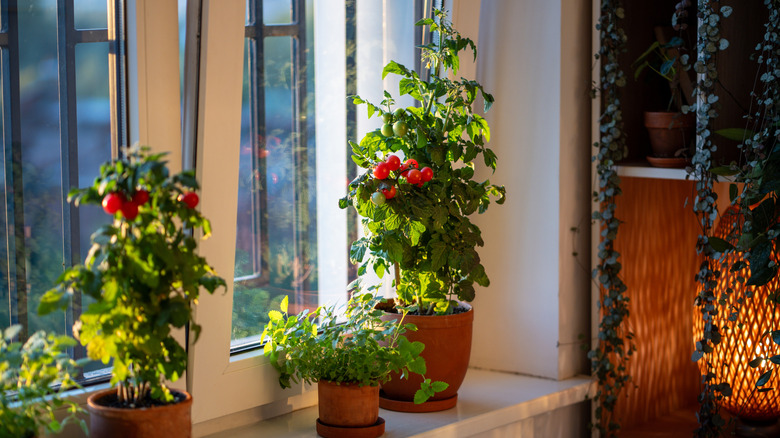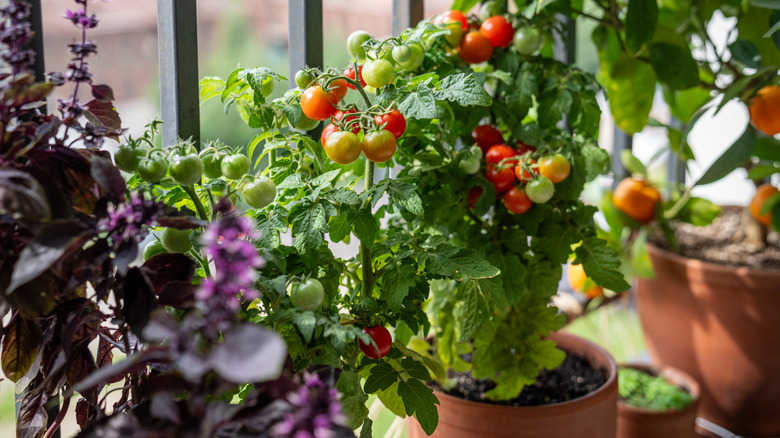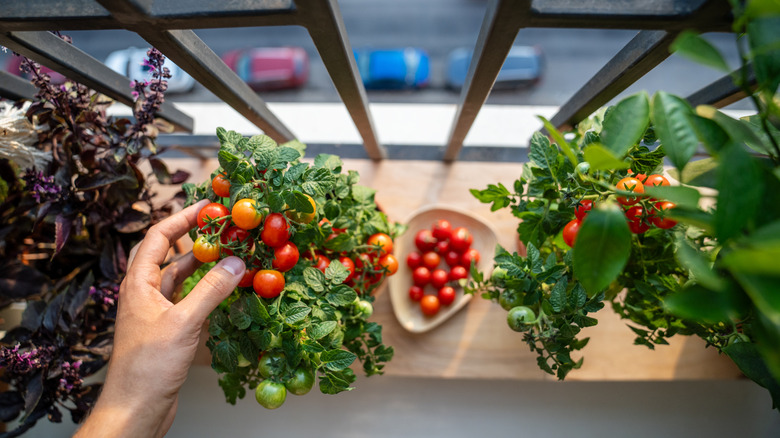Thinking About Growing Tomatoes Indoors? Here's Why You Should Think Again
Growing tomatoes (Solanum lycopersicum) indoors may sound easy, but many gardeners find it to be a difficult undertaking because of the different growing conditions and extra maintenance. Soil nutrients, temperature, growing space, and pollination are a few factors that'll need special attention to grow healthy indoor tomato plants. Not only can some tomato varieties take longer to produce fruit indoors, but any inconsistencies in the soil, water, or temperature can lead to serious issues, like leaves curling upwards, yellowing leaves, blossom-end rot, and, ultimately, no fruit.
In addition, tomato plants need pollinators to mature properly. While they are considered self-pollinating plants, outdoor tomatoes still get help pollinating from external sources, such as wind and bees. Growing tomatoes indoors, however, may require regular hand-pollination, which can bring its own set of concerns. These are just some of the problems indoor growers face compared to the gardeners who use proven planting techniques for healthier tomato plants in the garden. Whether you are new to indoor planting or a seasoned gardener, you should think carefully about whether you are up for the task of growing tomatoes indoors.
When to expect fruit on indoor vs outdoor tomato plants
In general, when growing tomato plants indoors, expect to wait longer for fruit than if you choose to grow outdoors. Certain tomato varieties respond differently to fluctuations in temperature and other factors, such as soil nutrients, which can lead to unexpected fruiting times. For example, cherry tomatoes growing outdoors in USDA hardiness zones 2 to 11 are usually ready to harvest in 55 to 65 days. However, when they are grown indoors, they can take significantly longer to start fruiting. Warm temperatures and consistent sunlight promote faster growth, which could mean more monetary and time investment to maintain indoor tomato plants. You might need to add grow lights or rotate placement for natural light.
Some gardeners also experience issues with the plants never producing fruit. In some cases, plants won't fruit if they do not have enough space to grow. Factors such as not pruning enough, using the wrong container size for your chosen variety, or placing the plants in a space that doesn't allow them to reach their full size can prevent fruit growth.
Extra maintenance required to avoid ruining your indoor tomatoes
After your tomato seeds sprout, avoid common mistakes when transplanting tomatoes, regardless of whether you plan to plant them indoors or outdoors. However, you should keep in mind that some mistakes are even more costly for indoor plants. For example, if the tomato plant is transplanted to a container that is too small, it could impact fruit production due to improper water and nutrient ratios. In some cases, a lack of pollination due to stagnant air indoors can also lead to the plant never fruiting.
When growing tomato plants indoors, regular watering can strip the nutrients from the potted soil. Without regular fertilization and proper aeration, your plants may begin to have issues with curling leaves, yellow leaves, and blossom-end rot. It's a good idea to keep an eye on the nutrient levels, including calcium, iron, magnesium, and nitrogen, to ensure they meet the proper levels for your chosen varieties at regular intervals.
Finally, perhaps the most important consideration is helping the plant with pollination. Tomatoes self-pollinate, but they still need external intervention to transfer pollen from one part of the plant to another. In indoor plants, this means that gardeners must hand-pollinate the plant by gently brushing the pollen from male flowers onto female flowers, taking care not to damage the plant. In the end, it is possible to grow tomato plants indoors, but there can be significant drawbacks that may require additional work, careful maintenance, and potential damage to the plant.


